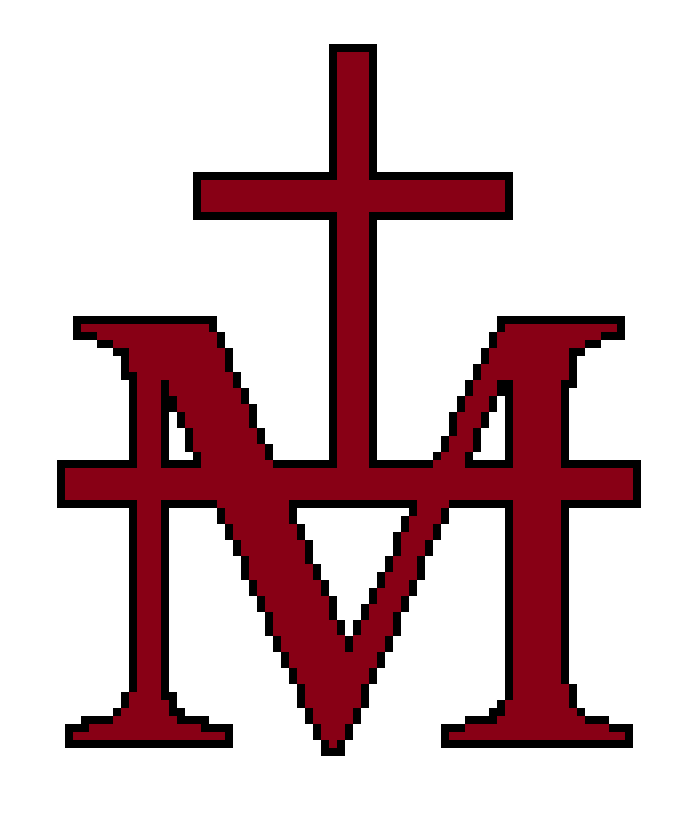The Christian Church
Complete History from Christ to Today

1. Apostolic Age (c. 30–100 AD)
- 30–33: Passion, Resurrection, and Ascension of Christ.
- 33: Pentecost – descent of the Holy Ghost, 3,000 baptized (Acts 2).
- c. 35–36: Conversion of St. Paul.
- 49: Council of Jerusalem – Gentiles not bound to Mosaic law (Acts 15).
- 64–67: Martyrdom of Saints Peter and Paul in Rome.
- 70: Destruction of the Temple of Jerusalem.
- 95: Pope Clement I writes to Corinth, testifying to papal authority.
- c. 100: Death of St. John, last of the Apostles.
2. Early Church & Fathers (100–313)
- 107: St. Ignatius of Antioch martyred; calls the Church “Catholic.”
- 144: Marcion’s heresy rejected, Church affirms Old and New Testament unity.
- 155: Martyrdom of St. Polycarp, disciple of John.
- 177: Martyrs of Lyon, led by St. Blandina.
- 180: St. Irenaeus writes Against Heresies – defends apostolic succession.
- 200: Sub Tuum Praesidium – oldest Marian prayer.
- 250–305: Severe Roman persecutions (Decius, Valerian, Diocletian).
- c. 300: Growing use of 27-book New Testament canon in liturgy.
3. Peace and Councils (313–451)
- 313: Edict of Milan (Constantine & Licinius legalize Christianity).
- 325: First Council of Nicaea – condemns Arianism, proclaims Christ “consubstantial.”
- 330: Constantine dedicates Constantinople as “New Rome.”
- 367: St. Athanasius’ Easter letter lists all 27 NT books.
- Edict of Thessalonica — Nicene Christianity becomes the empire’s official faith (clarifies the step after Milan).
- 381: First Council of Constantinople – Holy Ghost affirmed as divine.
- 393–397: Hippo & Carthage — North African councils reaffirm the New Testament canon list used in the liturgy (helps readers asking “who picked the Bible?”).
- 431: Council of Ephesus – Mary defined as Theotokos, Mother of God.
- 451: Council of Chalcedon – Christ is one Person, two natures.
4. Christian Empire & Christendom (500–1000)
- 529: St. Benedict founds Monte Cassino – monastic rule spreads.
- 596–597: St. Gregory the Great sends Augustine to England.
- 680: Third Council of Constantinople – affirms Christ’s two wills.
- 726–787: Iconoclast controversy; 787: Second Council of Nicaea restores icons.
- 800: Charlemagne crowned Holy Roman Emperor.
- 988: Conversion of Vladimir of Kiev – Christianity spreads to Slavic lands.
5. Schism and Renewal (1000–1300)
- 1054: The Great Schism – Rome and Constantinople formally separate.
- 1095: First Crusade proclaimed by Pope Urban II.
- 1122: Concordat of Worms – settles Investiture Controversy.
- 1209: St. Francis of Assisi founds the Franciscan Order.
- 1214 (Tradition): St. Dominic receives the Rosary from the Blessed Virgin Mary at Prouille, France.
- 1215: Fourth Lateran Council – defines transubstantiation, requires annual confession.
- 1274: Second Council of Lyons – attempt at East-West reunion.
- 1274: Death of St. Thomas Aquinas, great doctor of the Church.
6. Crisis & Reformation (1300–1600)
- 1309–1377: Avignon Papacy (“Babylonian Captivity”).
- 1378–1417: Western Schism – multiple rival popes.
- 1439: Council of Florence – reunion attempt with the East.
- 1453: Fall of Constantinople to the Turks.
- 1517: Martin Luther’s 95 Theses – Protestant Reformation begins.
- 1534: Church of England separates under Henry VIII.
- 1540: Approval of the Society of Jesus (Jesuits) — catalytic for Catholic reform, missions, education.
- 1545–1563: Council of Trent – reaffirms Catholic doctrine, reforms discipline.
- 1571: Battle of Lepanto – victory attributed to the Rosary.
- 1582: Gregorian Calendar introduced by Pope Gregory XIII.
7. Global Mission and Enlightenment
(1600–1800)
- 1600s: Jesuit missions in China, India, Americas (e.g., St. Francis Xavier).
- 1649: Execution of Charles I; persecution of Catholics intensifies in England.
- 1700s: Enlightenment philosophers challenge faith; rise of rationalism.
- 1773: Suppression of Jesuits by Pope Clement XIV.
- 1789: French Revolution; dechristianization, martyrdom of priests and nuns.
- 1801: Concordat between Napoleon and Pope Pius VII restores some Church rights.
8. 19th Century Renewal & Marian Dogmas
- 1830: Miraculous Medal apparitions to St. Catherine Labouré.
- 1846: Our Lady of La Salette.
- 1854: Dogma of the Immaculate Conception (Pius IX, Ineffabilis Deus).
- 1858: Apparitions of Our Lady of Lourdes.
- 1870: First Vatican Council – papal infallibility defined (Pastor Aeternus).
- 1870: Papal States seized; Pope Pius IX declares himself “prisoner of the Vatican.”
- 1891: Rerum Novarum – Leo XIII on Catholic social teaching.
9. 20th Century: Persecution and Renewal
- 1917: Apparitions of Our Lady of Fátima.
- 1917: First universal Code of Canon Law — shows juridical renewal pre-Vatican II.
- 1925: Pius XI institutes Feast of Christ the King.
- 1939–1945: WWII – martyrdom of St. Maximilian Kolbe at Auschwitz.
- 1950: Dogma of the Assumption of Mary (Pius XII, Munificentissimus Deus).
- 1962–1965: Second Vatican Council – renews liturgy, emphasizes Scripture, ecumenism.
- 1962–1965: Vatican II key documents — consider listing the four constitutions by name beneath your Vatican II entry.
- 1978: Year of Three Popes – John Paul I, John Paul II.
- 1978–2005: Pontificate of John Paul II – Marian devotion, fall of Communism, Catechism of the Catholic Church (1992).
10. The 21st Century Church
- 2000: Great Jubilee Year proclaimed by John Paul II.
- 2005–2013: Pontificate of Benedict XVI – liturgy, teaching, resignation in 2013.
- 2013–present: Pontificate of Francis – evangelization, care for poor, synods.
- Ongoing: Growth of Catholicism in Africa & Asia; secular decline in West.
- Marian devotion: global rosary crusades, emphasis on Fátima message.
- 2020s: Eucharistic revival movements in response to weakening belief.

Thank You for Visiting our Site
We strive to provide the most complete and highest quality material we can for you, our readers. Although not perfect, it is our desire and prayer that you benefit from our efforts.

